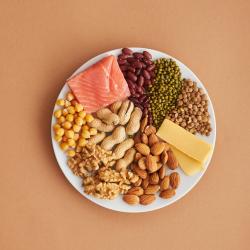10 Simple Swaps for Healthier Cooking in Your Kitchen
Making healthier food choices often takes a backseat to convenience. However, you don’t have to compromise on taste or time to cook healthier meals. By making a few simple swaps in your kitchen, you can significantly boost the nutritional profile of your meals. Here are ten easy changes to get you started on the path to healthier cooking.
1. Use Whole Grains Instead of Refined Grains
Refined grains, such as white rice and pasta, have been stripped of many nutrients. Swap these out for whole grains like brown rice, quinoa, or whole wheat pasta. Whole grains are rich in fiber, vitamins, and minerals, helping to promote better digestion and keep you feeling full longer.
2. Opt for Lean Proteins Over Processed Meats
Processed meats like bacon, sausages, and deli meats are often high in unhealthy fats and sodium. Try leaning towards chicken, turkey, tofu, or legumes for a healthier protein source. These options are lower in saturated fats and can improve heart health.
3. Replace Butter with Healthy Oils
Butter, while delicious, is high in saturated fats. Swap it out for healthier oils like olive oil, avocado oil, or coconut oil when cooking. These oils are rich in monounsaturated and polyunsaturated fats, which are better for your heart.
4. Substitute Greek Yogurt for Sour Cream
Greek yogurt is a versatile ingredient that can replace sour cream in most recipes. It’s lower in fat and calories but high in protein, boosting the nutritional value of your dishes. Use it in dips, dressings, or as a topping.
5. Choose Natural Sweeteners Over Refined Sugar
Refined sugar can lead to various health issues, including weight gain and increased risk of chronic diseases. Instead, use natural sweeteners like honey or maple syrup in moderation. These alternatives also contain antioxidants and trace nutrients, offering a healthier sweetness to your dishes.
6. Season with Herbs and Spices Instead of Salt
Excessive salt intake is linked to high blood pressure and heart disease. Instead of relying on salt for flavor, use herbs and spices such as basil, cilantro, cumin, or paprika. They add a burst of flavor without the negative health effects associated with too much sodium.
7. Swap Creamy Dressings for Vinaigrettes
Many creamy dressings are heavy in calories and unhealthy fats. Opt for vinaigrettes made with olive oil or vinegar instead. They offer a tangy, fresh taste without the extra calories, making your salads a healthier choice.
8. Choose Fresh Produce Over Canned or Frozen
While canned and frozen produce can be convenient, they often contain added sugars or sodium. Whenever possible, choose fresh fruits and vegetables. They retain more nutrients and can greatly enhance the flavor and nutrition of your meals.
9. Use Avocado as a Spread Instead of Mayonnaise
Mayonnaise is often high in calories and fat. Avocado, on the other hand, is packed with healthy fats, fiber, and a variety of essential vitamins. Spread it on your sandwiches or use it as a base for salad dressings for a nutritious alternative.
10. Substitute Mashed Vegetables for Cream-Based Soups
Soups are a comfort food staple, but many cream-based soups are loaded with calories and fats. By using pureed vegetables such as cauliflower or butternut squash, you can create a creamy texture without the cream. This swap boosts fiber intake while reducing calorie consumption.
Embarking on a healthier lifestyle doesn’t require a complete overhaul of your kitchen habits. With these ten simple swaps, you can enjoy your favorite meals with enhanced flavors and added nutritional benefits. Incorporating these changes gradually can make your cooking healthier, leaving you feeling better and more energized in your daily life. Remember that small steps can lead to big changes, and your journey to healthier eating starts in your kitchen.






















